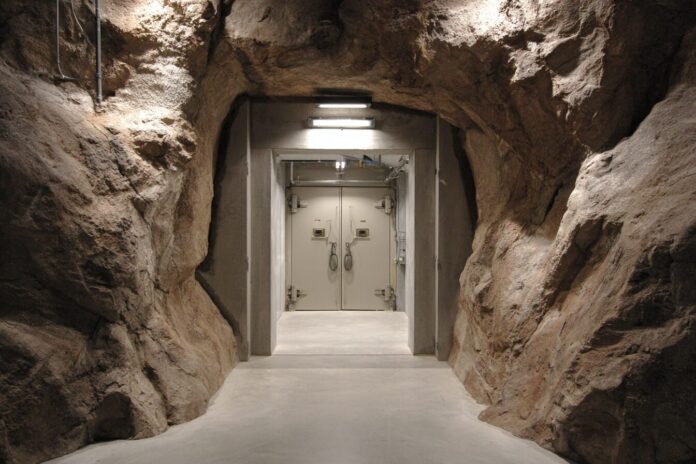The Digital Age Meets Subterranean Security
The physical realm of the internet has evolved far beyond modern glass and steel. Today, deep underground spaces once built for warfare and isolation now house powerful digital infrastructures. Most importantly, experts argue that these retrofitted sites are redefining what security means in a digital age.
Because traditional data centers face challenges from both environmental risks and cyber threats, many companies are exploring alternative solutions. In addition, these subterranean sites provide unmatched physical protection and sustainability, prompting industry leaders to reimagine how data can be safely stored in unusual environments. For further reading on these transformative innovations, visit the detailed study available at DIVA-portal.
Why Go Underground? The Logic of Deep Data Storage
Retrofitting abandoned bunkers and mines is not an impulsive trend. It is a carefully considered move driven by pressing modern challenges. Most importantly, these locations offer inherent protection through thick walls and remote settings.
Because underground facilities naturally regulate temperatures and reduce cooling demands, they are ideal for housing sensitive equipment. Therefore, many operators opt for these sites because they also contribute to energy savings. In addition, the reuse of these historic structures supports environmental sustainability by limiting the need for new construction. For more insights on sustainable data center design, explore this article on the innovative use of repurposed spaces.
Famous Examples: From Bomb Shelters to Data Vaults
Globally, engineers and IT professionals have unveiled projects that transform old military bunkers into modern data fortresses. Most importantly, these projects blend heritage with cutting-edge technology. They feature striking innovations such as advanced cooling systems and robust physical barriers.
For instance, Sweden’s Pionen data center, once a Cold War shelter, now draws comparisons to a futuristic stronghold with its striking design. Meanwhile, Norway’s Lefdal Mine uses natural fjord water cooling to achieve remarkable energy efficiency. Additionally, Switzerland’s Mount10 AG stands as a testament to the secure replication of vault-like conditions. More examples and specific case studies are available at StrataCore, which provides a thorough review of these unique installations.
The Bunker as a Reflection of Societal Anxiety
Because yesterday’s bunkers were built in reaction to the threats of a nuclear age, they now mirror current worries about digital vulnerabilities. Most importantly, data bunkers represent a cultural shift from fearing physical annihilation to safeguarding our intangible digital heritage.
Anthropologists note that this transformation echoes ancient rituals, where societies safeguarded vital treasures in hidden tombs. Therefore, the shift from protecting gold bars to preserving petabytes of information highlights how our values evolve. Additionally, this trend underscores our collective anxiety over potential cyber attacks and data breaches. To read more about the intersection of culture and data security, refer to insights provided by SAGE Journals.
Engineering and Political Challenges in Retrofitting Deep Data Centers
Retrofitting deep underground sites into data centers involves complex engineering challenges. Most importantly, converting these old structures requires modernizing outdated infrastructure. Engineers must install advanced fiber optic networks and upgrade power connections to meet today’s demands.
Because regulatory issues frequently complicate these projects, operators must navigate strict safety and legal requirements. Government agencies sometimes limit how long facilities can be occupied during emergencies. Therefore, collaboration between engineers, legal experts, and city planners is essential. This dialogue, as described in detail by realty experts, ensures that retrofitting projects meet both technical and political standards.
Environmental Impact: Greening Up Underground
Environmental stewardship remains a key priority in the data center industry. Most importantly, underground data centers offer a unique advantage by maintaining a constant ambient temperature that reduces energy consumption. Companies leverage renewable energy sources to complement natural cooling, resulting in impressive efficiency gains.
Because the climate impact of traditional data centers has attracted criticism, retrofitting projects often incorporate green technologies. For example, Lefdal Mine in Norway runs entirely on renewable hydropower and employs fjord water cooling to enhance energy efficiency. Therefore, such projects demonstrate that security and sustainability can work in tandem. To further explore these initiatives, the article at DataCenters.com provides a comprehensive review of these eco-friendly retrofits.
Looking Ahead: The Future of Subterranean Data
Because technology evolves rapidly, today’s retrofitted data centers may soon become tomorrow’s historical relics. Most importantly, the impermanence of these structures underscores the dynamic nature of security and digital preservation. Organizations continue to innovate, ensuring these spaces meet ever-changing demands.
Besides that, future generations might see new retrofits or find alternate uses for these underground complexes. The evolution from Cold War bunkers to contemporary data vaults reflects an enduring need for secure storage. As noted in Semafor, the intersection of legacy structures and cutting-edge technology will define tomorrow’s digital landscape. Therefore, the story of underground data centers remains an evolving chapter in technological progress.
Conclusion
In summary, the transformation of nuclear bunkers, abandoned mines, and mountain vaults into modern data centers is an engineering marvel. Most importantly, these facilities underscore a harmonious blend of historical legacy and technological innovation. They serve as secure havens for digital assets in a rapidly changing world.
Because retrofitting projects tackle technical, regulatory, and environmental challenges, they set a new benchmark for sustainable data storage. Therefore, the evolution of these underground data centers speaks volumes about our collective pursuit of security and efficiency. For more detailed examinations into these transformative trends, consider exploring resources like Colocation America and Culture Machine.



